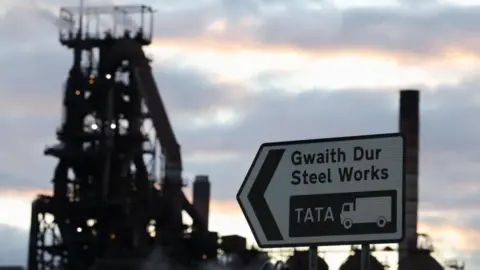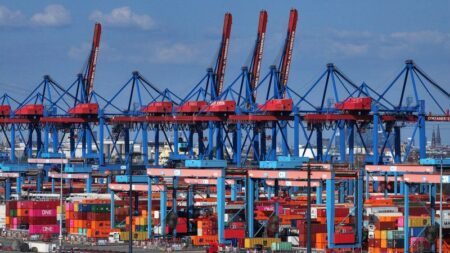Tata Steel is taking significant strides towards transforming its operations in Port Talbot, South Wales, by initiating work on a new electric arc furnace. This move is aimed at ushering in a “cleaner, greener future” for the site, which has been deeply affected by the cessation of traditional steelmaking practices. Notably, the closure of the site’s blast furnaces in September 2024 resulted in the loss of approximately 2,800 jobs, leaving a gap in employment and production in the region.
The construction of this electric arc furnace marks a pivotal change in how steel will be produced at the Port Talbot facility. Expected to commence operations by 2027, the new furnace is designed to reduce carbon emissions by approximately 90%, aligning with global sustainability goals and the pressing need for greener industrial practices. This transition to electric arc technology reflects a broader shift within the steel industry, aiming to adopt methods that are less harmful to the environment.
The announcement about the new furnace was met with mixed emotions. A union representative described this development as “bittersweet,” reflecting the sorrow for the job losses in the past while also acknowledging the potential for new opportunities. However, UK government officials hailed the initiative as a “major win,” suggesting optimism about the future of steelmaking in Wales.
To officially kick off the construction, UK Business Secretary Jonathan Reynolds and Welsh Secretary Jo Stevens will be present alongside Tata Steel representatives. This moment is set against the backdrop of a strategic meeting of the UK’s steel council, where key figures like Industry Minister Sarah Jones are finalizing a steel strategy that is reportedly backed by up to £2.5 billion in investment.
The local community and union representatives have expressed a desire for the new electric arc furnace to be a stepping stone towards rebuilding the steel industry in the region. Alasdair McDiarmid, the assistant general secretary of the Community Union, emphasized the importance of continued investment for the creation of high-quality jobs, not just in Port Talbot but across related sectors. The union is committed to engaging with the government to ensure the plans to maintain and enhance job opportunities in the steel industry remain on the agenda.
Furthermore, the UK government confirmed that a £500 million grant was part of the enhanced financial package aiding in Port Talbot’s transition to innovative steel production. Business Secretary Reynolds labeled this milestone as “great news for Welsh steelmaking,” asserting it would secure local jobs for years to come.
Tata Group Chairman Natarajan Chandrasekaran characterized this groundbreaking initiative as not just about establishing a new furnace but heralding a new era of sustainable manufacturing in Britain. He underscored the pivotal role that Port Talbot will play in this transformation, supporting innovation and demonstrating a commitment to responsible leadership in the industry.
While the announcement and forthcoming construction provide hope for many, there remain concerns regarding the changing dynamics of the steel industry. Reports indicated that negotiations are ongoing with the US administration to secure tariff protections while addressing potential issues surrounding imported steel, particularly given recent threats of tariffs that could exclude Port Talbot from tariff-free access due to prior imports since the closure of the blast furnaces.
As discussions unfold regarding trade implications, local politicians, including Luke Fletcher from Plaid Cymru, raised concerns over the losses incurred alongside the opportunities for job security that have vanished. They emphasized the need for attention to be paid to safeguarding the essential primary steelmaking jobs for the future, underscoring the complex landscape faced by the steel industry in Wales.
In conclusion, the construction of the new electric arc furnace at Tata’s Port Talbot site represents a crucial evolution in the steel industry, aiming to pivot towards sustainability while navigating the challenging realities of job losses and trade negotiations. The mixed responses from the community and government officials alike highlight the ongoing balancing act between embracing new industrial processes and addressing the socio-economic impacts of previous decisions concerning traditional steelmaking practices.










